Fabrication of Gas-Sensor Chips Based on Silicon–Carbon Films Obtained by Electrochemical Deposition
Abstract
1. Introduction
2. Materials and Methods
2.1. Films Characterization
2.2. Electrical and Gas Sensor Experiments
2.3. Fabrication of Gas-Sensor Chips
2.4. Fabrication of the Silicon–Carbon Film
3. Results and Discussion
3.1. Film Characterization
3.2. Current-Voltage Measurements
3.3. Gas-Sensor Characteristics with CH4 and CO Gases
3.4. Conductivity Investigation
3.4.1. Conductivity Mechanism
3.4.2. Type of Conductivity (Mott-Shottki Plot)
4. Conclusions
Supplementary Materials
Author Contributions
Funding
Acknowledgments
Conflicts of Interest
References
- Nebel, M.; Neugebauer, S.; Kiesele, H.; Schuhmann, W. Local reactivity of diamond-like carbon modified PTFE membranes used in SO2 sensors. Electrochim. Acta 2010, 55, 7923–7928. [Google Scholar] [CrossRef]
- Korotcenkov, G. Gas response control through structural and chemical modification of metal oxide films: State of the art and approaches. Sens. Actuators B Chem. 2005, 107, 209–232. [Google Scholar] [CrossRef]
- Myasoedova, T.N.; Mikhailova, T.S.; Yalovega, G.E.; Plugotarenko, N.K. Resistive low-temperature sensor based on the SiO2ZrO2 film for detection of high concentrations of NO2 gas. Chemosensors 2018, 6, 67. [Google Scholar] [CrossRef]
- Zhang, C.; Luo, Y.; Xu, J.; Debliquy, M. Room temperature conductive type metal oxide semiconductor gas sensors for NO2 detection. Sens. Actuators A Phys. 2019, 289, 118–133. [Google Scholar] [CrossRef]
- Khodadadi, A.; Mohajerzadeh, S.S.; Mortazavi, Y.; Miri, A.M. Cerium oxide/SnO2-based semiconductor gas sensors with improved sensitivity to CO. Sens. Actuators B Chem. 2001, 80, 267–271. [Google Scholar] [CrossRef]
- Markwitz, A.; Leveneur, J.; Gupta, P.; Suschke, K.; Futter, J.; Rondeau, M. Transition metal ion implantation into diamond-like carbon coatings: Development of a base material for gas sensing applications. J. Nanomater. 2015, 16, 50. [Google Scholar] [CrossRef]
- Bhadra, N.; Hussain, S.; Das, S.; Bhunia, R.; Bhar, R.; Pal, A.K. H2S gas sensor based on nanocrystalline copper/dlc composite films. Plasmonics 2015, 10, 503–509. [Google Scholar] [CrossRef]
- Presniakov, M.Y.; Popov, A.I.; Shupegin, M.L.; Usoltseva, D.S.; Vasiliev, A.L. Thermal stability of metal-silicon–carbon nanocomposites. Nanotechnol. Russ. 2014, 9, 518–532. [Google Scholar] [CrossRef]
- Yang, W.J.; Choab, Y.H.; Sekinoc, T.; Shima, K.B.; Niiharac, K.; Auha, K.H. Thermal stability evaluation of diamond-like nanocomposite coatings. Thin Solid Films 2003, 434, 49–54. [Google Scholar] [CrossRef]
- Choi, H.W.; Choi, J.-H.; Lee, K.-R.; Ahn, J.-P.; Oh, K.H. Structure and mechanical properties of Ag-incorporated DLC films prepared by a hybrid ion beam deposition system. Thin Solid Films 2007, 516, 248–251. [Google Scholar] [CrossRef]
- Ohno, T.; Takeno, T.; Miki, H.; Takagi, T. Microstructural design for fabrication of strain sensor utilizing tungsten-doped amorphous carbon coatings. Diam. Relat. Mater. 2011, 20, 651–654. [Google Scholar] [CrossRef]
- Koh, A.T.T.; Hsieh, J.; Chua, D.H.C. Structural characterization of dual-metal containing diamond-like carbon nanocomposite films by pulsed laser deposition. Diam. Relat. Mater. 2010, 19, 637–642. [Google Scholar] [CrossRef]
- Kosukegawa, H.; Berkani, S.; Miki, H.; Takagi, T. Structure and electrical properties of molybdenum-containing diamond-like carbon coatings for use as fatigue sensors. Diam. Relat. Mater. 2017, 80, 38–44. [Google Scholar] [CrossRef]
- Falcade, T.; Shmitzhaus, T.E.; dos Reis, O.G.; Vargas, A.L.M.; Hubler, R.; Muller, I.L.; de Fraga, M.C. Electrodeposition of diamond-like carbon films on titanium alloy using organic liquids: Corrosion and wear resistance. Appl. Surf. Sci. 2012, 263, 18–24. [Google Scholar] [CrossRef]
- Yan, X.B.; Xu, T.; Chen, G.; Xue, Q.J.; Yang, S.R. Synthesis of diamond-like carbon/nanosilica composite films by an electrochemical method. Electrochem. Commun. 2004, 6, 1159–1162. [Google Scholar] [CrossRef]
- Wang, H.; Shen, M.R.; Ning, Z.Y.; Cao, C.B.; Dang, H.Y.; Zhu, H.S. Deposition of diamond-like carbon films by electrolysis of methanol solution. Appl. Phys. Lett. 1996, 69, 1074–1076. [Google Scholar] [CrossRef]
- Cai, K.; Cao, C.B.; Zhu, H.S. Deposition of diamond-like carbon films on aluminium in the liquid phase by an electrochemical method. Carbon 1999, 37, 1860–1862. [Google Scholar] [CrossRef]
- Guo, D.; Cai, K.; Li, L.T.; Huang, Y.; Gui, Z.L.; Zhu, H.S. Evaluation of diamond-like carbon films electrodeposited on an Al substrate from the liquid phase with pulse-modulated power. Carbon 2001, 39, 1395–1398. [Google Scholar] [CrossRef]
- Kulak, A.I.; Kokorin, A.I.; Meissner, D.; Ralchenko, V.G.; Vlasov, I.I.; Kondratyuk, A.V.; Kulak, T.I. Electrodeposition of nanostructured diamond-like films by oxidation of lithium acetylide. Electrochem. Commun. 2003, 5, 301–305. [Google Scholar] [CrossRef]
- Yunusa, Z.; Hamidon, M.N.; Kaiser, A.; Awang, Z. Gas Sensors: A Review. Sens. Transducers 2014, 168, 61–75. [Google Scholar]
- Yalovega, G.E.; Myasoedova, T.N.; Funik, A.O.; Plugotarenko, N.K.; Brzhezinskaya, M.; Bahmatskaya, A.I. Mechanism of the formation of copper-containing fractal-like crystallites in metal-organic thin films: Shape simulation and XANES analysis. Phys. Status Solidi B 2016, 253, 2217–2224. [Google Scholar] [CrossRef]
- Tsai, C.-H.; Fei, P.-H.; Lin, C.-M.; Shiu, S.-L. CuO and CuO/graphene nanostructured thin films as counter electrodes for Pt-free dye-sensitized solar cells. Coatings 2018, 8, 21. [Google Scholar] [CrossRef]
- Rydosz, A. The use of copper oxide thin films in gas-sensing applications. Coatings 2018, 8, 425. [Google Scholar] [CrossRef]
- Myasoedova, T.N.; Yalovega, G.E.; Shmatko, V.A.; Funik, A.O.; Petrov, V.V. SiO2CuOx films for nitrogen dioxide detection: Correlation between technological conditions and properties. Sens. Actuators B Chem. 2016, 230, 167–175. [Google Scholar] [CrossRef]
- Grigoryev, M.N.; Myasoedova, T.N.; Mikhailova, T.S. The electrochemical deposition of silicon–carbon thin films from organic solution. J. Phys. Conf. Ser. 2018, 1124, 081043. [Google Scholar] [CrossRef]
- Maissel, L.L.; Glang, R. Handbook of Thin Film Technology; McGraw-Hill: New York, NY, USA, 1970; Chapter 5; p. 5. [Google Scholar]
- Ferrari, A.C.; Robertson, J. Raman spectroscopy of amorphous, nanostructured, diamond-like carbon, and nanodiamond. Philos. Trans. R. Soc. Lond. A 2004, 362, 2477–2512. [Google Scholar] [CrossRef]
- Chu, P.K.; Li, L. Characterization of amorphous and nanocrystalline carbon films. Mater. Chem. Phys 2006, 96, 253–277. [Google Scholar] [CrossRef]
- Mehr, M.; Moore, D.T.; Esquivel-Elizondo, J.R.; Nino, J.C. Mechanical and thermal properties of low temperature sintered silicon carbide using a preceramic polymer as binder. J. Mater. Sci. 2015, 50, 7000–7009. [Google Scholar] [CrossRef]
- Iijima, M.; Kamiya, H. Surface modification of silicon carbide nanoparticles by Azo Radical Initiators. J. Phys. Chem. C 2008, 112, 11786–11790. [Google Scholar] [CrossRef]
- Ren, M.; Kang, X.; Li, L.; Duan, L.; Liao, F. Electrochemical sensor based on Ni/reduced graphene oxide nanohybrids for selective detection of ascorbic acid. J. Dispers. Sci. Technol. 2019. [Google Scholar] [CrossRef]
- Dinh, T.; Dao, D.V.; Phan, H.-P.; Wang, L.; Qamar, A.; Nguyen, N.-T.; Tanner, P.; Rybachuk, M. Charge transport and activation energy of amorphous silicon carbide thin film on quartz at elevated temperature. Appl. Phys. Express 2015, 8, 061303. [Google Scholar] [CrossRef]
- Li, N.; Fan, Y.; Shi, Y.; Xiang, Q.; Wang, X.; Xu, J. A low temperature formaldehyde gas sensor based on hierarchical SnO/SnO2 nano-flowers assembled from ultrathin nanosheets: Synthesis, sensing performance and mechanism. Sens. Actuators B Chem. 2019, 294, 106–115. [Google Scholar] [CrossRef]
- Wimmer-Teubenbacher, R.; Sosada-Ludwikowska, F.; Zaragoza Travieso, B.; Defregger, S.; Tokmak, O.; Niehaus, J.S.; Deluca, M.; Köck, A. CuO thin films functionalized with gold nanoparticles for conductometric carbon dioxide gas sensing. Chemosensors 2018, 6, 56. [Google Scholar] [CrossRef]
- Rydosz, A.; Szkudlarek, A. Gas-sensing performance of M-Doped CuO-based thin films working at different temperatures upon exposure to propane. Sensors 2015, 15, 20069–20085. [Google Scholar] [CrossRef]
- Presmanes, L.; Thimont, Y.; el Younsi, I.; Chapelle, A.; Blanc, F.; Talhi, C.; Bonningue, C.; Barnabé, A.; Menini, P.; Tailhades, P. Integration of P-CuO thin sputtered layers onto microsensor platforms for gas sensing. Sensors 2017, 17, 1409. [Google Scholar] [CrossRef]
- Li, D.; Tang, Y.; Ao, D.; Xiang, X.; Wang, S.; Zu, H. Ultra-highly sensitive and selective H2S gas sensor based on CuO with sub-ppb detection limit. Int. J. Hydrogen Energy 2019, 44, 3985–3992. [Google Scholar] [CrossRef]
- Lee, J.E.; Do Kim, Y.; Lee, H.-K.; Park, H.J.; Mab, A.; Choi, S.-Y.; Lee, D.-S. Sonochemical synthesis of HKUST-1-based CuO decorated with Pt nanoparticles for formaldehyde gas-sensor applications. Sens. Actuators B Chem. 2019, 292, 289–296. [Google Scholar] [CrossRef]
- Hou, L.; Zhang, C.; Li, L.; Du, C.; Li, X.; Kang, X.-F.; Chen, W. CO gas sensors based on p-type CuO nanotubes and CuO nanocubes: Morphology and surface structure effects on the sensing performance. Talanta 2018, 188, 41–49. [Google Scholar] [CrossRef]
- Li, D.; Zu, X.; Ao, D.; Tang, Q.; Fu, Y.; Guo, Y.; Bilawal, K.; Faheem, M.B.; Li, L.; Li, S.; et al. High humidity enhanced surface acoustic wave (SAW) H2S sensors based on sol–gel CuO films. Sens. Actuators B Chem. 2019, 294, 55–61. [Google Scholar] [CrossRef]
- Sarıca, N.; Alev, O.; Arslan, L.Ç.; Öztürk, Z.Z. Characterization and gas sensing performances of noble metals decorated CuO nanorods. Thin Solid Films 2019, 685, 321–328. [Google Scholar] [CrossRef]
- Poloju, M.; Jayababu, N.; Reddy, M.V.R. Improved gas sensing performance of Al doped ZnO/CuO nanocomposite based ammonia gas sensor. Mater. Sci. Eng. B 2018, 227, 61–67. [Google Scholar] [CrossRef]
- Han, C.; Chen, X.; Liu, D.; Zhou, P.; Zhao, S.; Bi, H.; Meng, D.; Wei, D.; Shen, Y. Fabrication of shrub-like CuO porous films by a top-down method for highperformance ethanol gas sensor. Vacuum 2018, 157, 332–339. [Google Scholar] [CrossRef]
- Park, H.J.; Choi, N.-G.; Kang, H.; Jung, M.Y.; Park, J.W.; Park, K.H.; Lee, D.-S. A ppb-level formaldehyde gas sensor based on CuO nanocubes prepared using a polyol process. Sens. Actuators B Chem. 2014, 203, 282–288. [Google Scholar] [CrossRef]
- Javanmardi, S.; Nasresfahani, S.; Sheikhi, M.H. Facile synthesis of PdO/SnO2/CuO nanocomposite with enhanced carbon monoxide gas sensing performance at low operating temperature. Mater. Res. Bull. 2019, 118, 110496. [Google Scholar] [CrossRef]
- Xu, H.; Zhu, Z.; Chen, C.; Wen, T.; Zhao, X.; Xie, L. Highly sensitive H2S gas sensors based on Pd-doped CuO nanoflowers with low operating temperature. Sens. Actuators B Chem. 2017, 253, 809–817. [Google Scholar]
- Behera, B.; Chandra, S. An innovative gas sensor incorporating ZnO-CuO nanoflakes in planar MEMS technology. Sens. Actuators B Chem. 2016, 229, 414–424. [Google Scholar] [CrossRef]
- Umar, A.; Alshahrani, A.A.; Angarni, H.; Kumar, R. CuO nanosheets as potential scaffolds for gas sensing applications. Sens. Actuators B Chem. 2017, 250, 24–31. [Google Scholar] [CrossRef]
- Park, S.; Kim, S.; Kheel, H.; Hyun, S.K.; Jin, S.; Lee, C. Enhanced H2S gas sensing performance of networked CuO-ZnO composite nanoparticle sensor. Mater. Res. Bull. 2016, 82, 130–135. [Google Scholar] [CrossRef]
- Shaalan, N.M.; Rashad, M.; Abdel-Rahim, M.A. CuO nanoparticles synthesized by microwave-assisted method for methane sensing. Opt. Quantum Electron. 2016, 48, 531. [Google Scholar] [CrossRef]
- Wong, H.; Foong, Y.M.; Chua, D.H.C. Improving the conductivity of diamond-like carbon films with zinc doping and its material properties. Appl. Surf. Sci. 2011, 257, 9616–9620. [Google Scholar] [CrossRef]
- Konezny, S.J.; Bussac, M.N.; Geiser, A.; Zuppiroli, L. Charge transport mechanisms in organic and microcrystalline silicon field-effect transistors. Proc. SPIE 2007, 6658, 66580D. [Google Scholar]
- Wang, W.; Wang, C.; Yue, X.; Zhang, C.; Zhou, C.; Wu, W.; Zhu, H. Raman spectroscopy and resistance-temperature studies of functionalized multiwalled carbon nanotubes/epoxy resin composite film. Microelectron. Eng. 2019, 214, 50–54. [Google Scholar] [CrossRef]
- Barinov, A.D.; Popov, A.I.; Presnyakov, Y.M. Effect of nanophase concentration on the properties of metal-containing silicon–carbon nanocomposites. Inorg. Mater. 2017, 53, 690–696. [Google Scholar] [CrossRef]
- Zav’yalova, S.A.; Kupriyanova, L.Y.; Pivkinab, A.N.; Shounman, J. The microstructure of and charge transfer in thin films based on metal–polymer nanocomposites. Russ. J. Phys. Chem. 2006, 80, 1461–1466. [Google Scholar] [CrossRef]
- Sun, L.; Han, C.; Wu, N.; Wang, B.; Wang, Y. High temperature gas sensing performances of silicon carbide nanosheets with an n–p conductivity transition. RSC Adv. 2018, 8, 13697–13707. [Google Scholar] [CrossRef]
- Swain, G.; Sultana, S.; Naik, B.; Parida, K. Coupling of crumpled-type novel MoS2 with CeO2 nanoparticles: A noble-metal-free p–n heterojunction composite for visible light photocatalytic H2 production. ACS Omega 2017, 2, 3745–3753. [Google Scholar] [CrossRef] [PubMed]
- Liu, Y.; Yu, Y.-X.; Zhang, W.-D. MoS2/CdS heterojunction with high photoelectrochemical activity for H2 evolution under visible light: The role of MoS2. J. Phys. Chem. C 2013, 117, 12949–12957. [Google Scholar] [CrossRef]
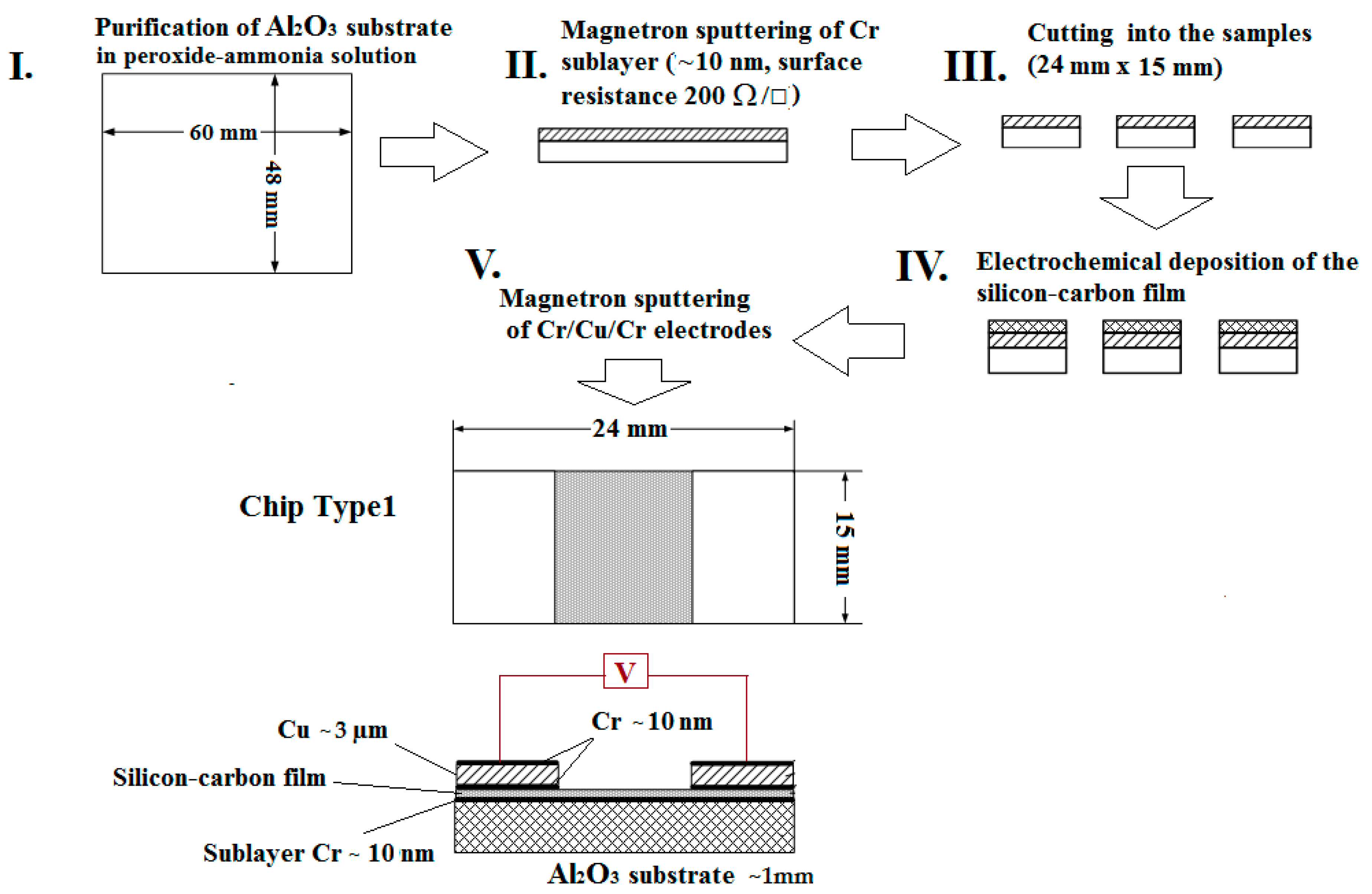
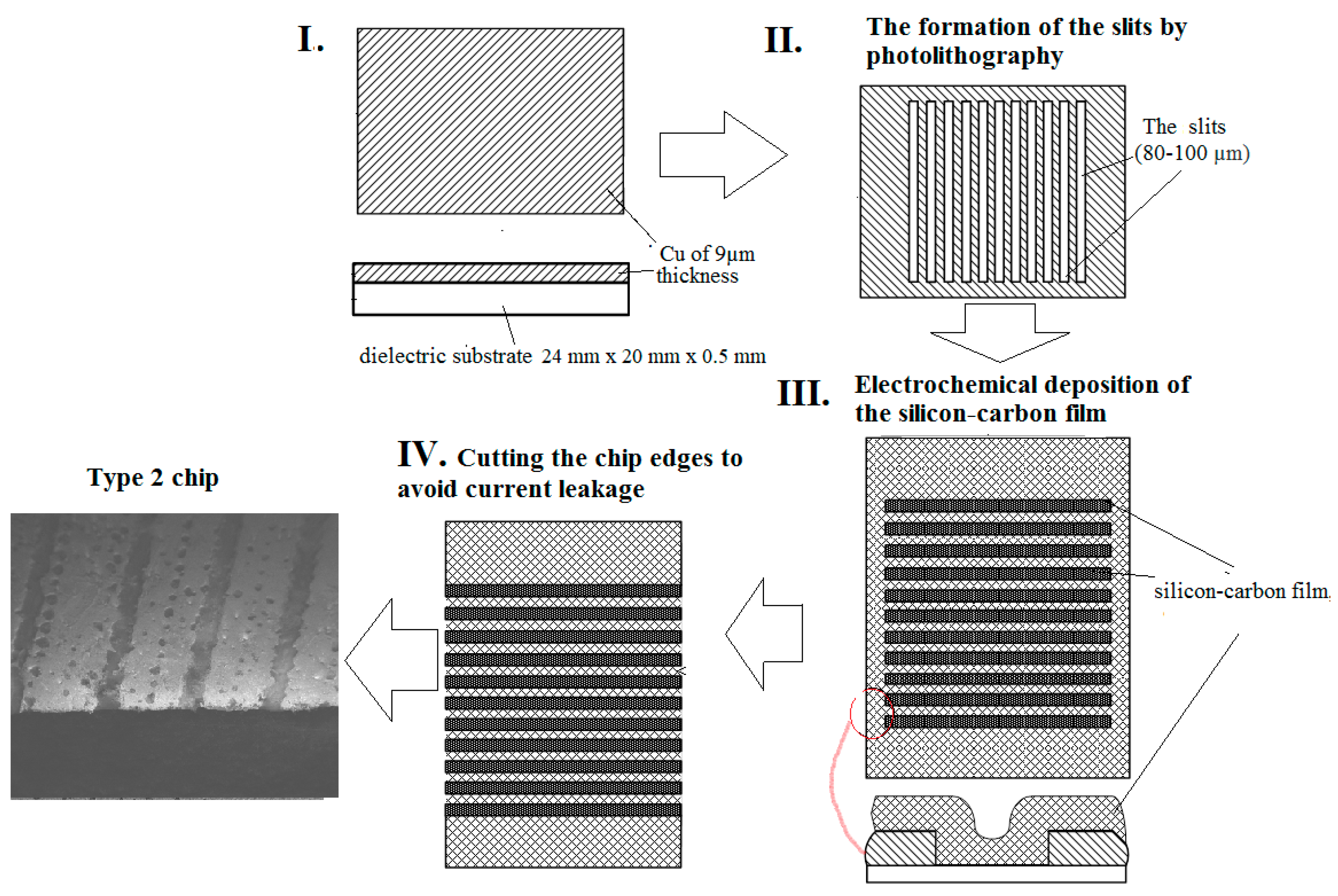
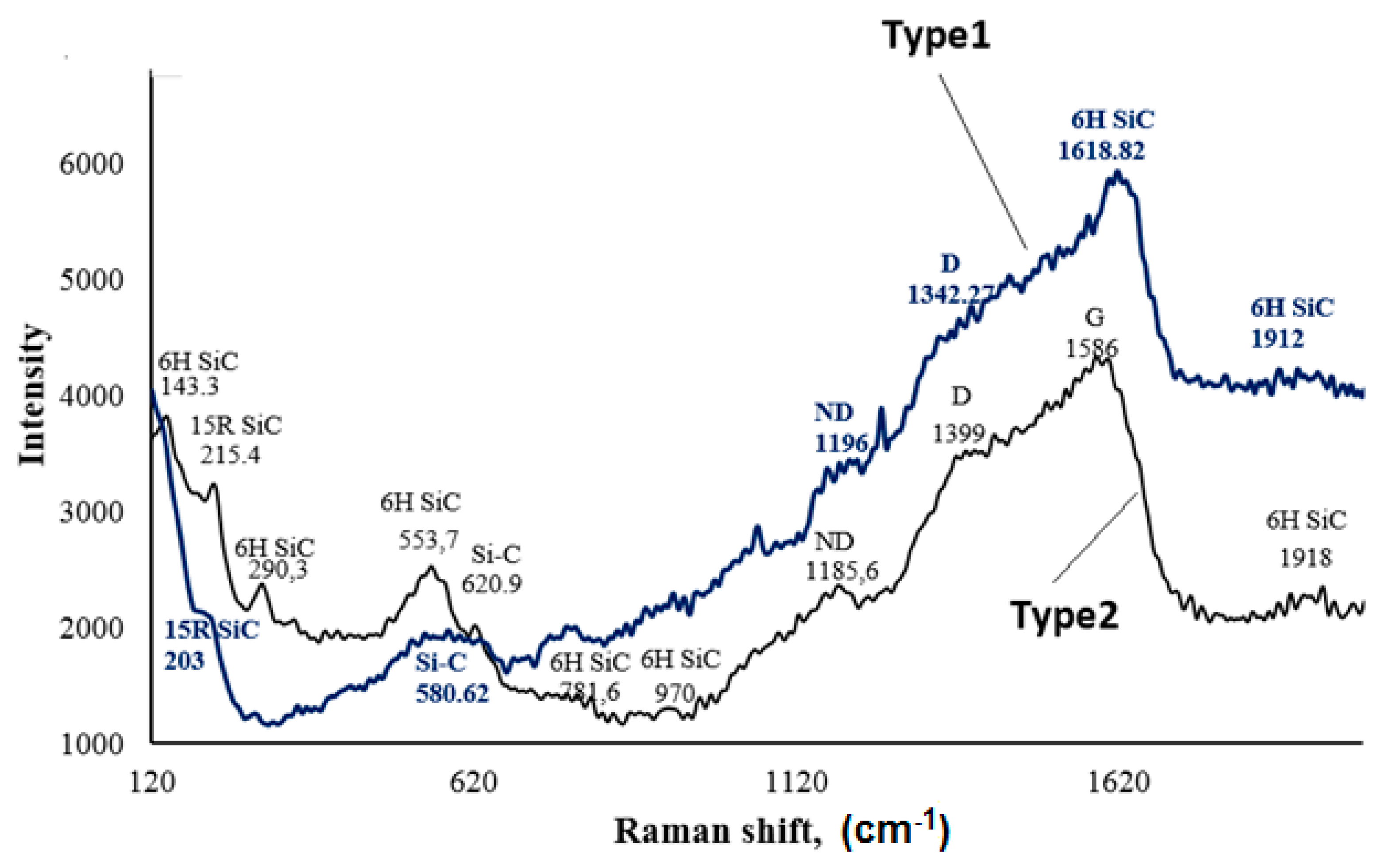
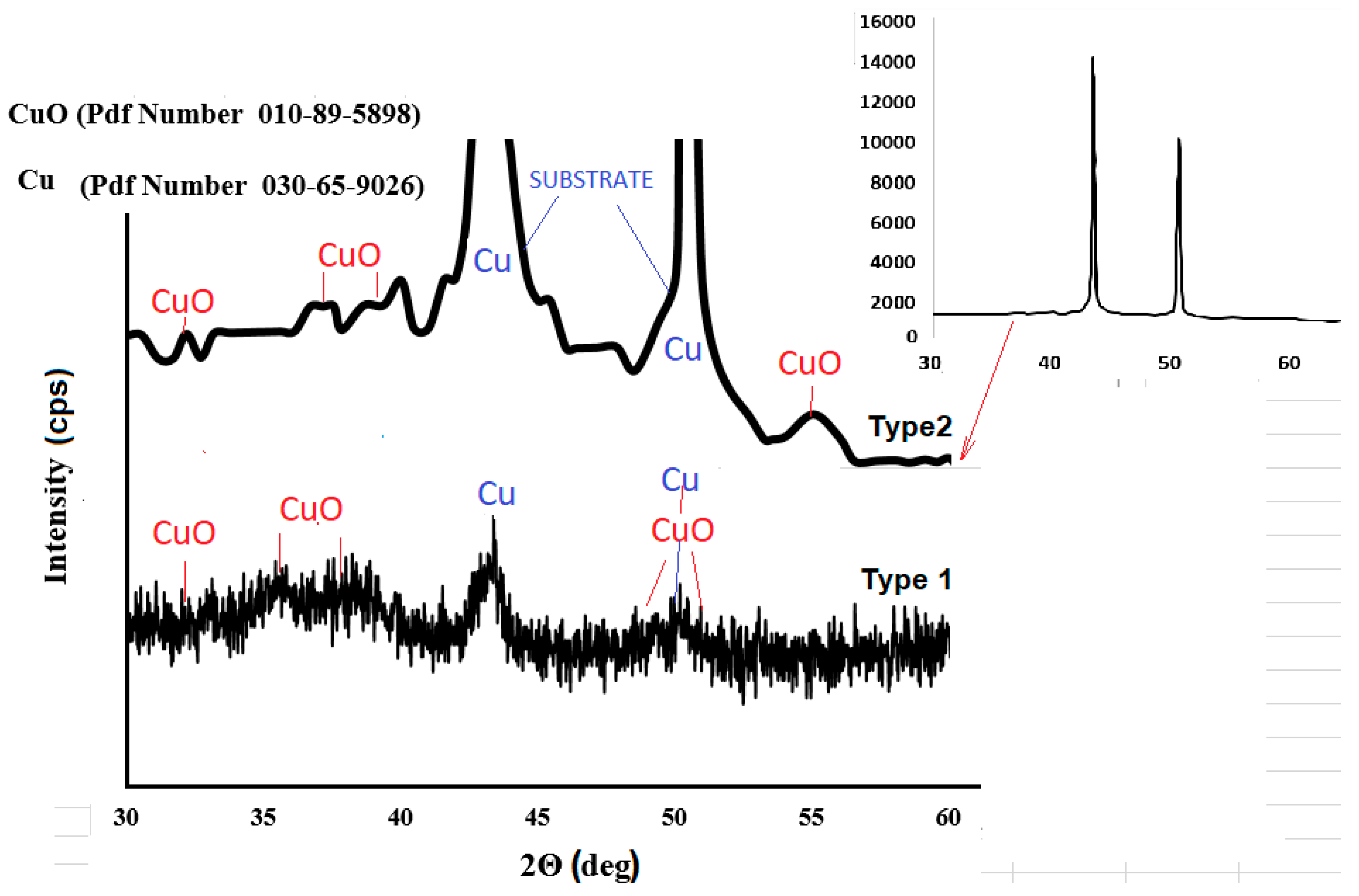

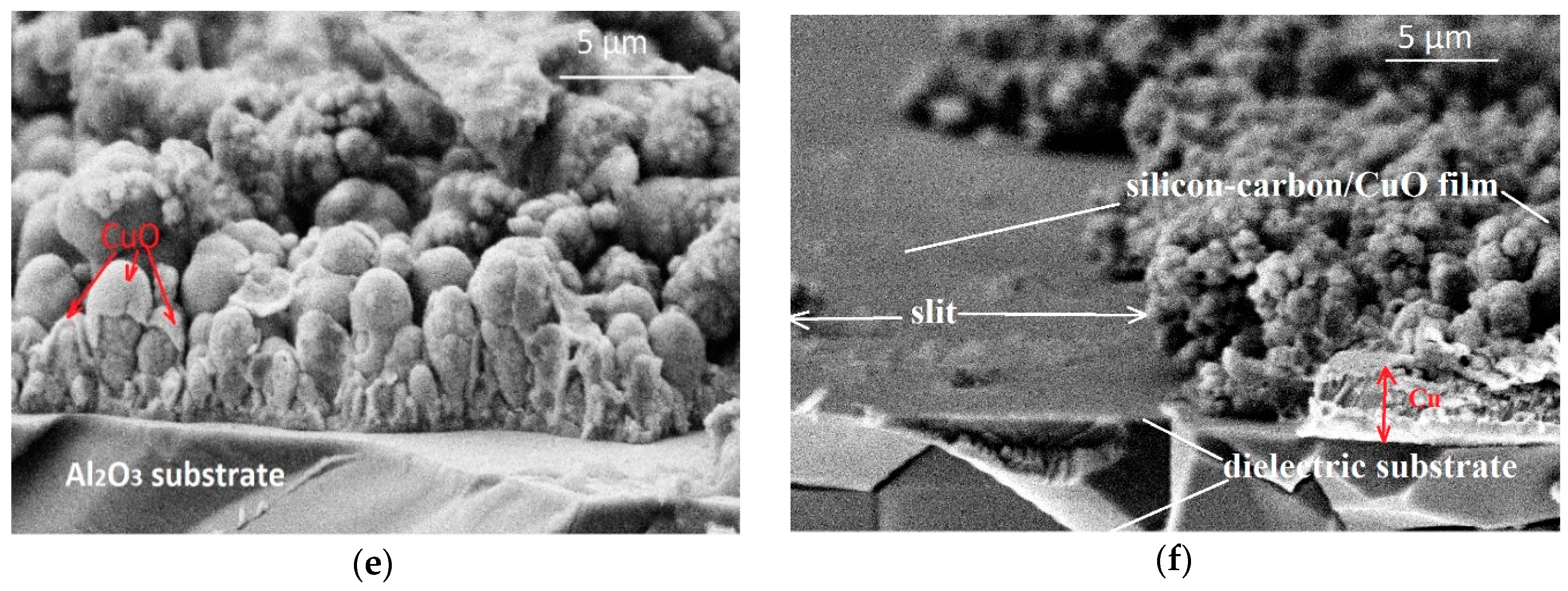
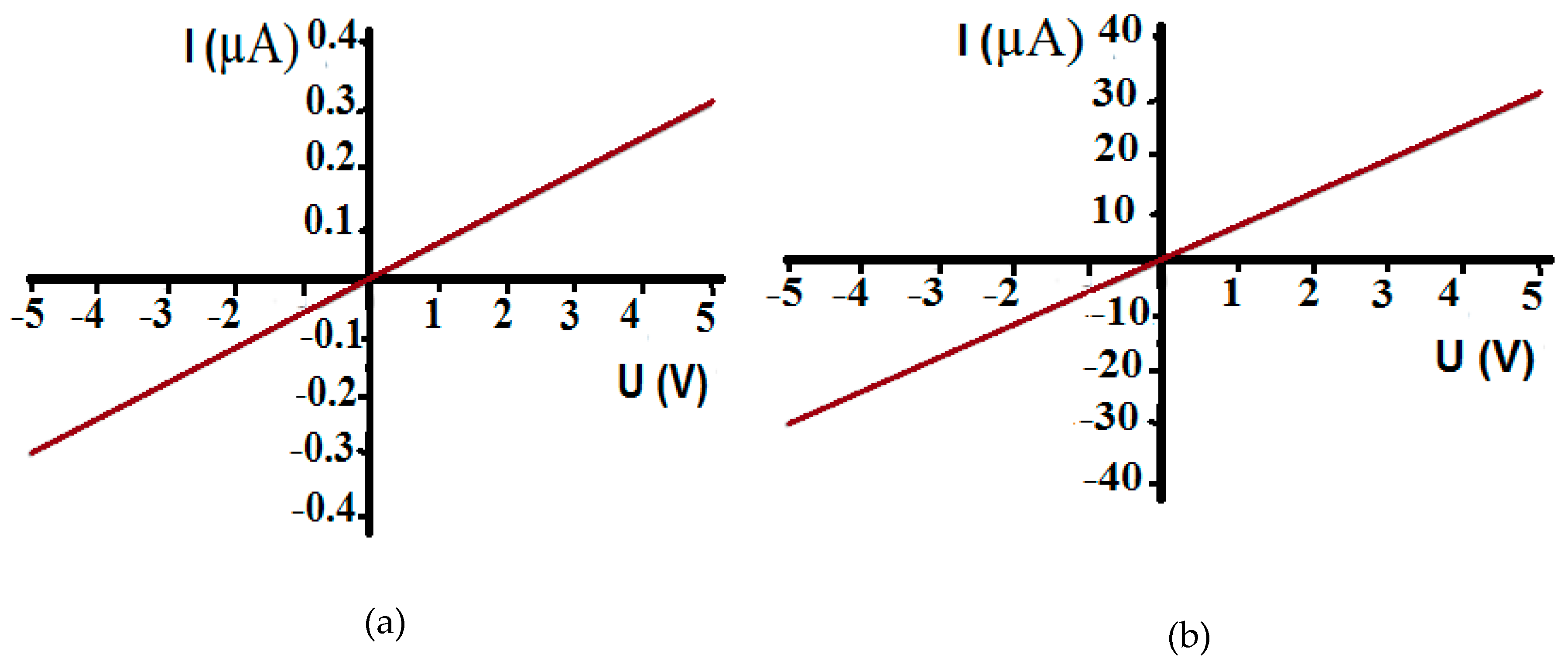
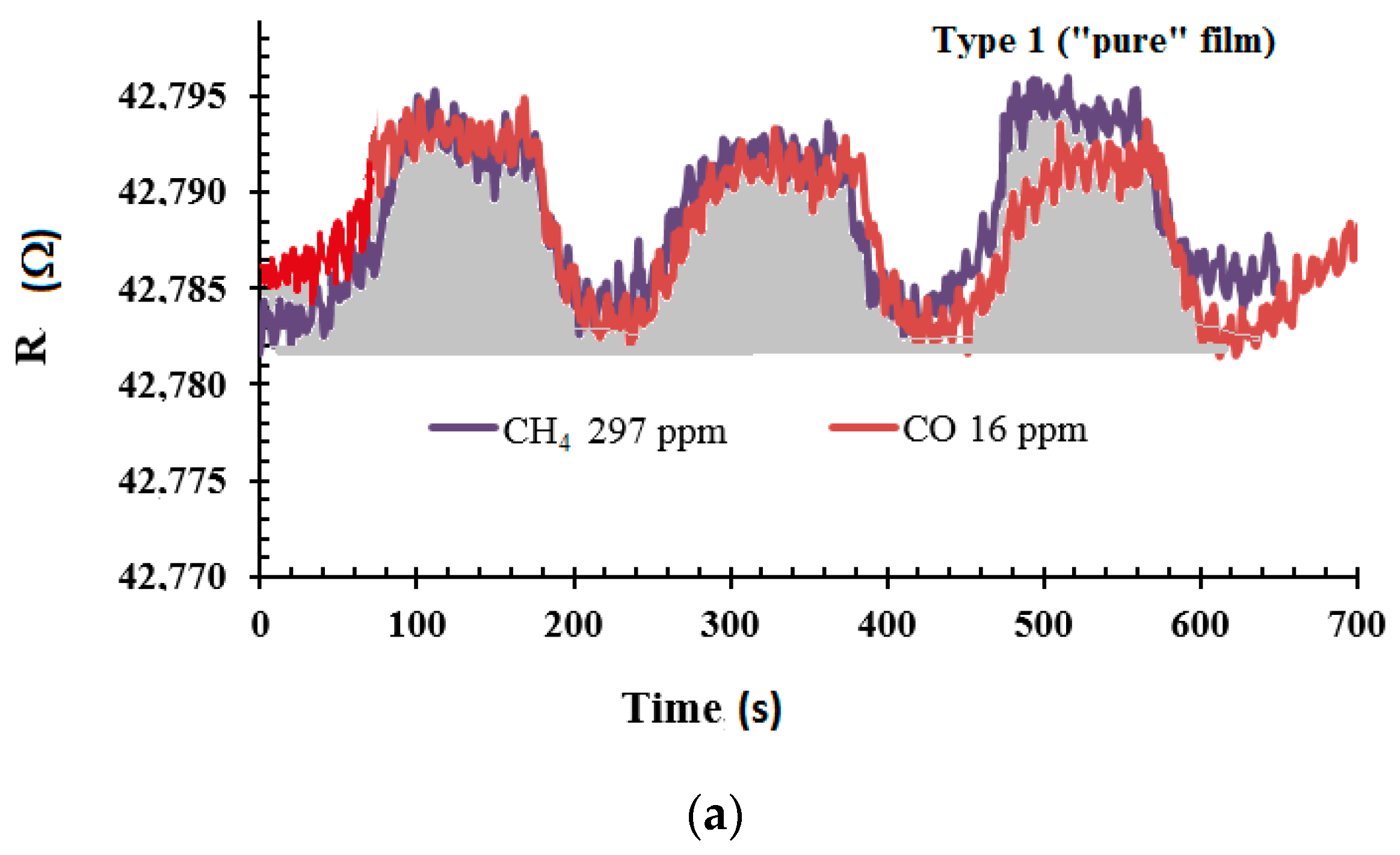
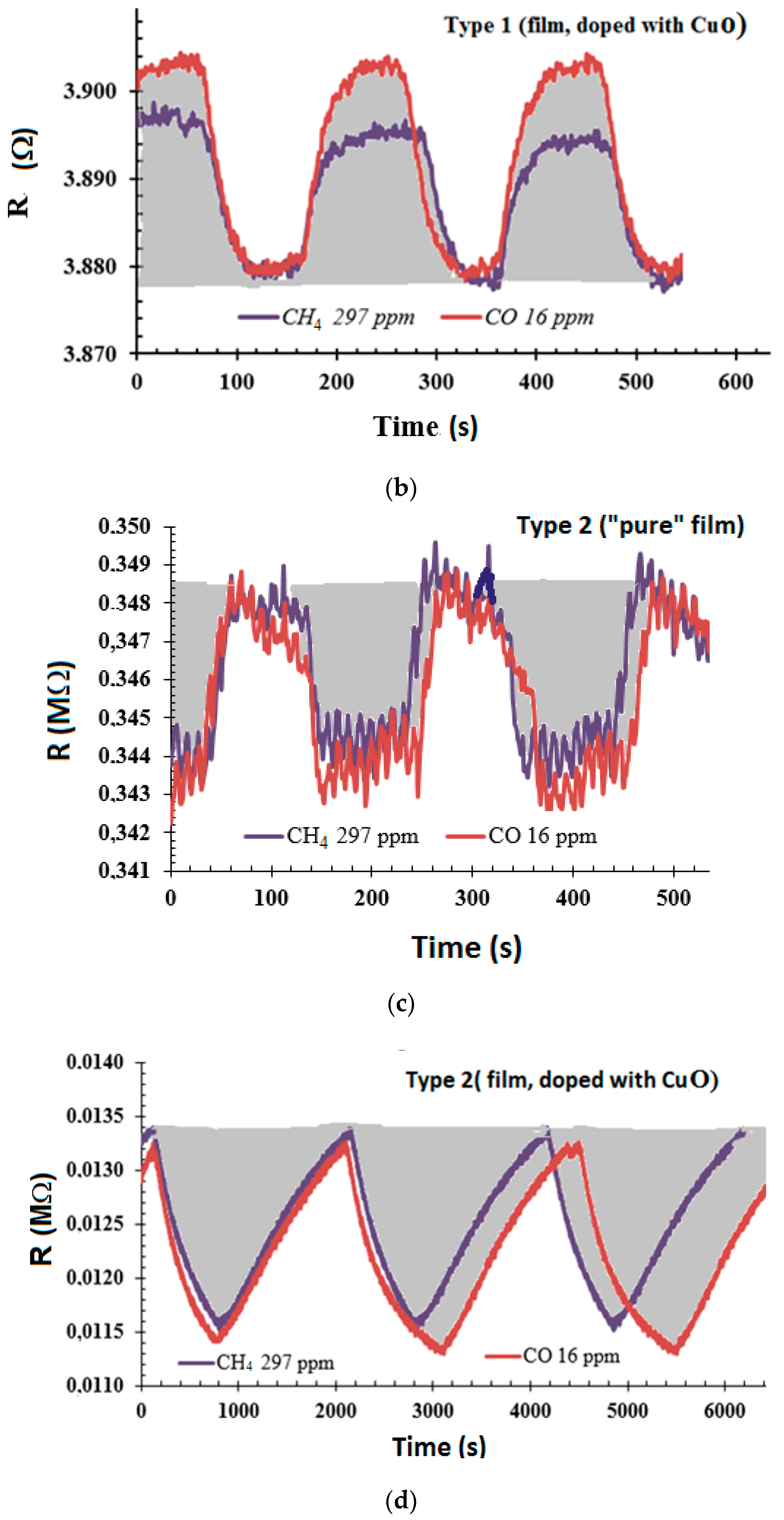
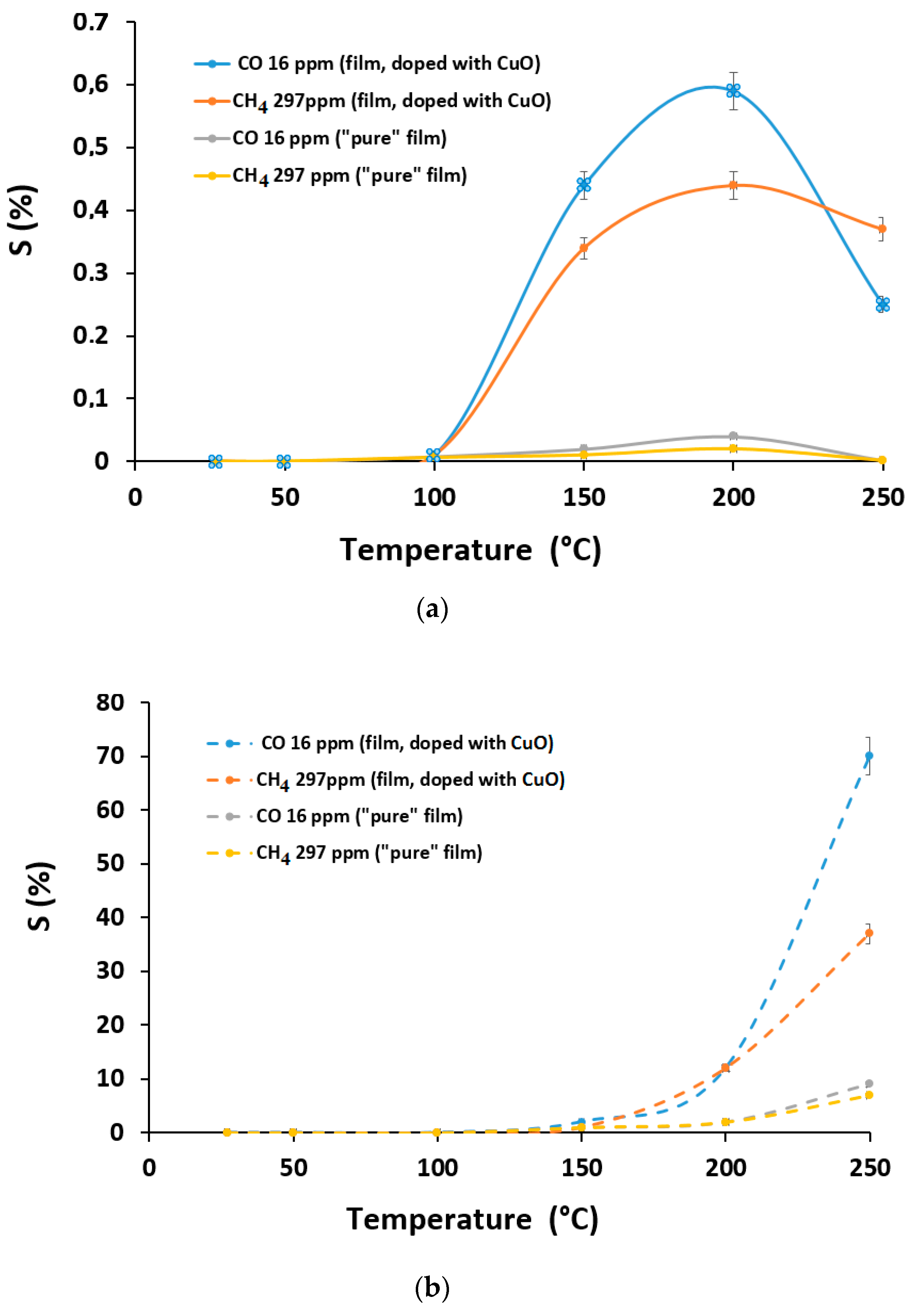
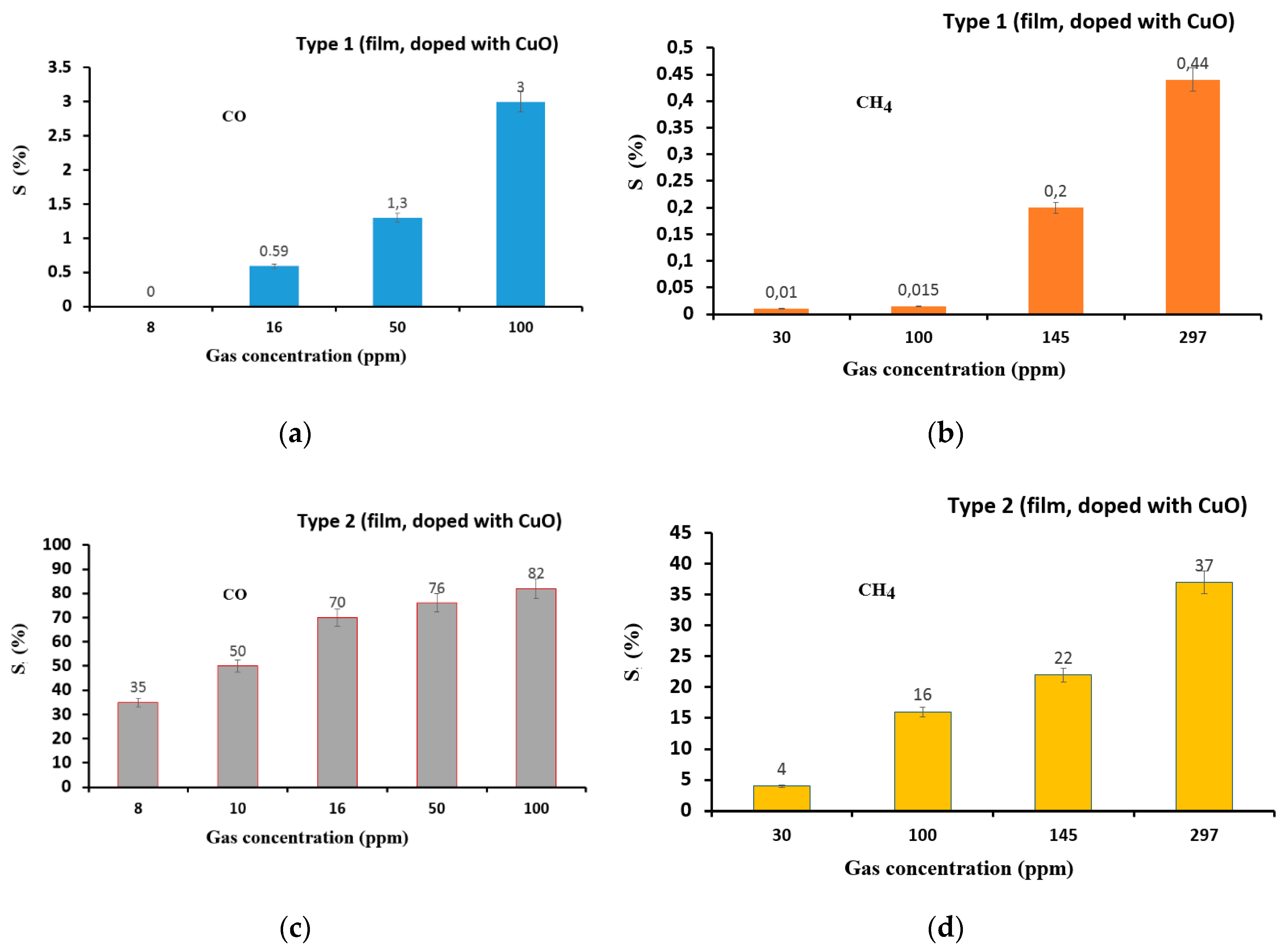
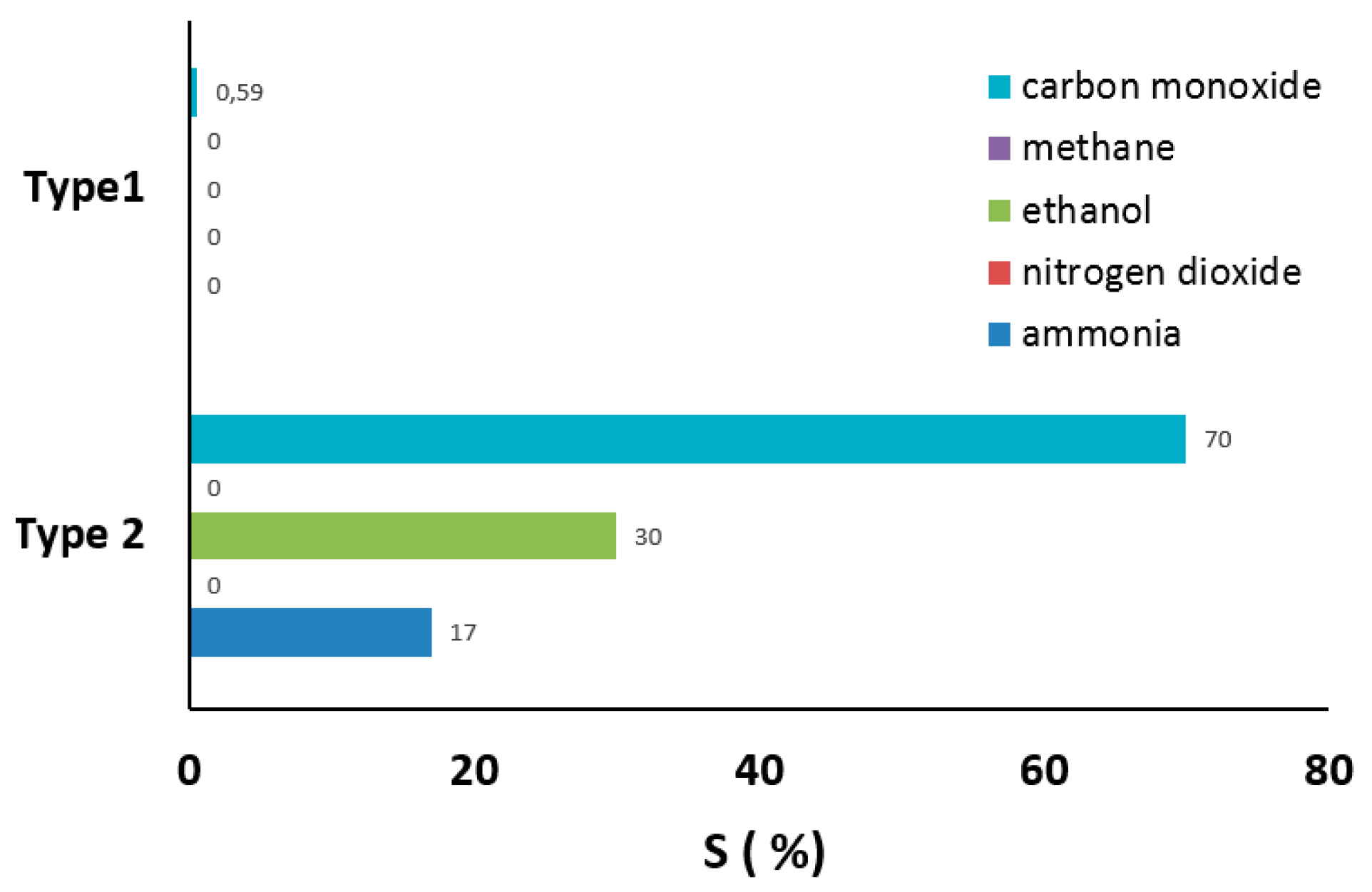
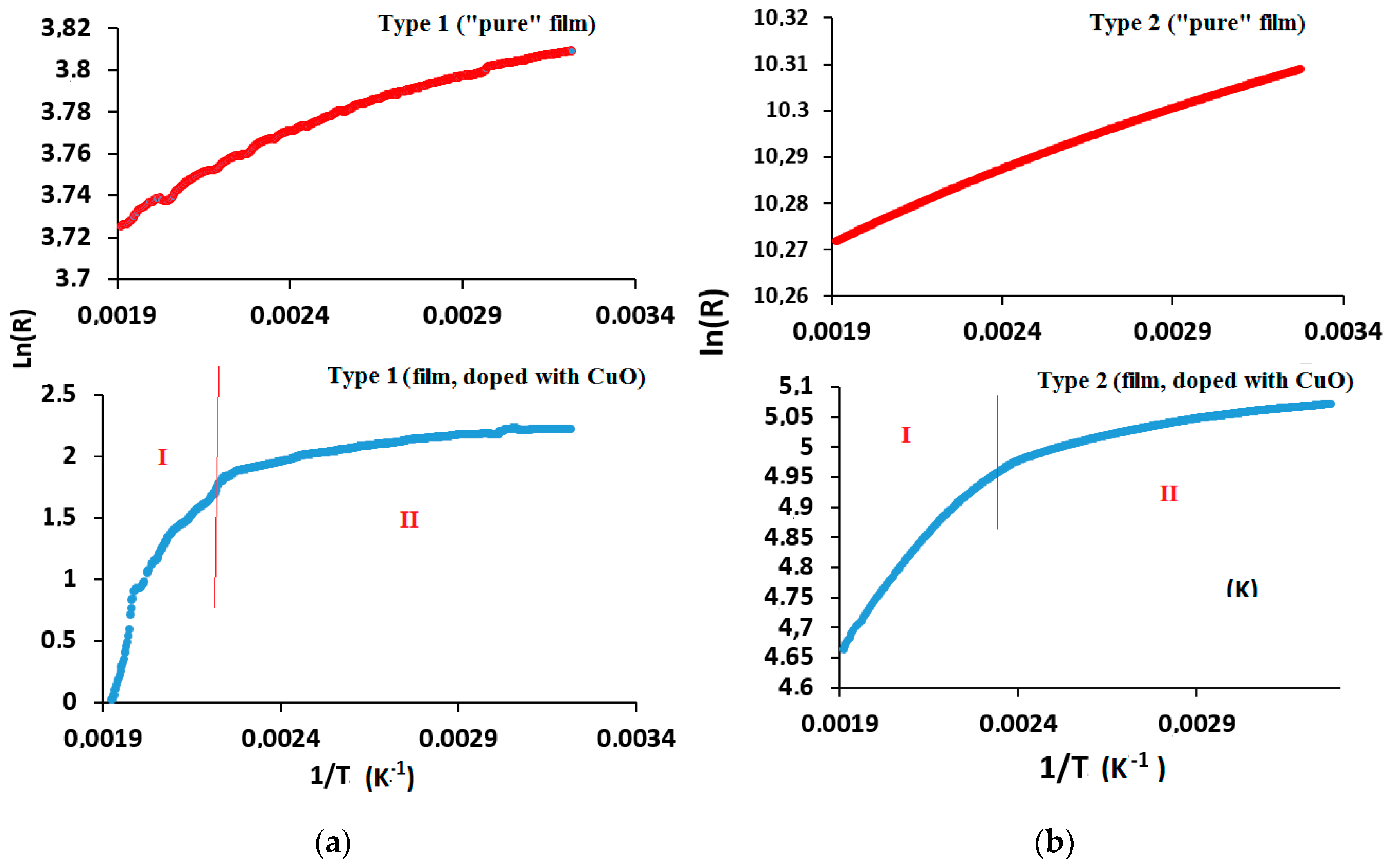
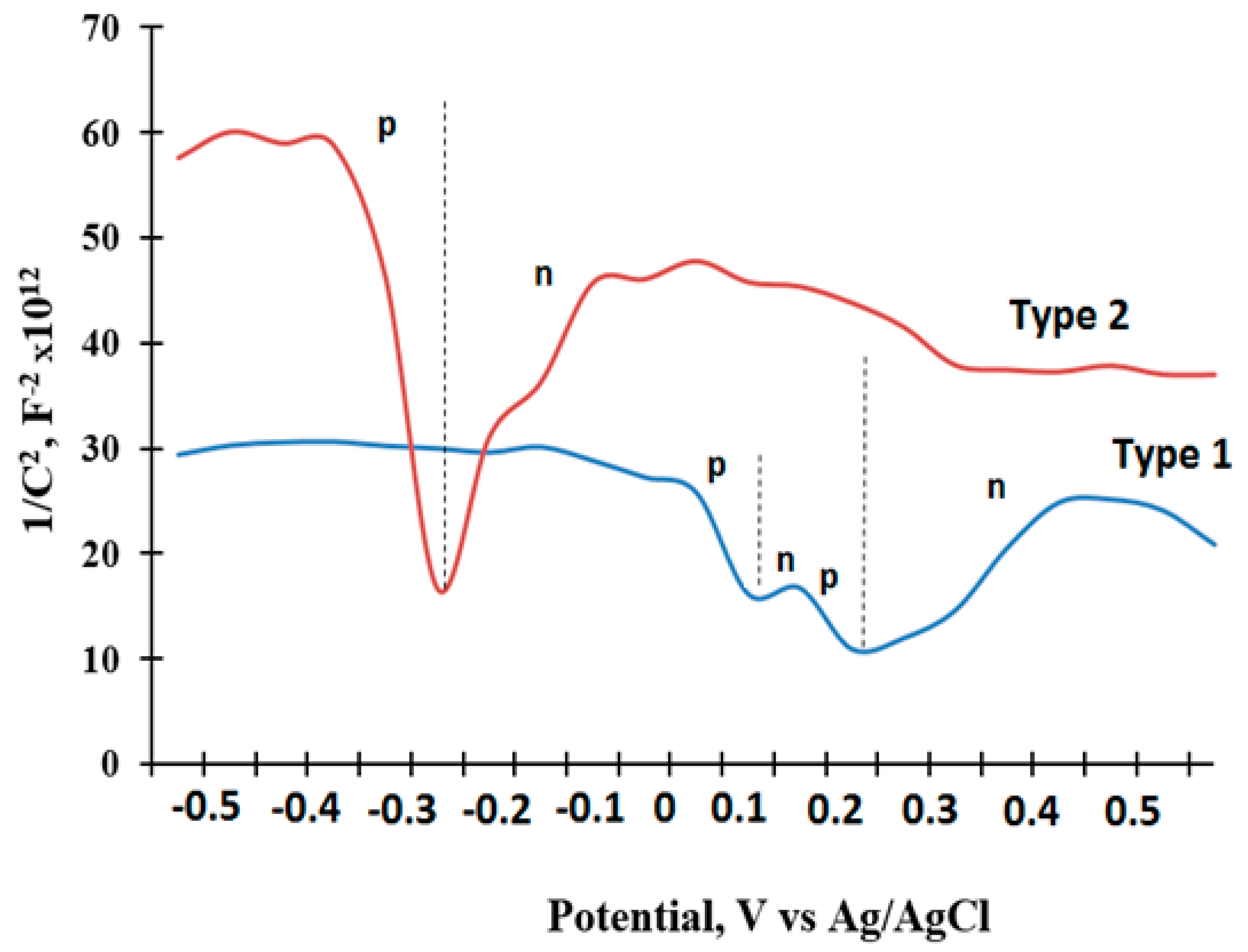
| Material | Production Method | Detectable Gases (Detection Limit) | Operation Temperature, °C | Response Time | Recovery Time | Reference |
|---|---|---|---|---|---|---|
| Au-NPs (gold nanopartic-les) functionalized CuO | Thermal oxidation | CO2 (2000 ppm) | 300 | 4.3 min | 4.4 min | [34] |
| CO (200 ppm) | 3 min | 10 min | ||||
| Cr-doped CuO thin films | Magnetron sputtering | C3H8 (100 ppm) | 250 | 10 s | 24 s | [35] |
| p-type CuO | Radio-frequency sputtering | C2H4O (5 ppm) | 400 | 15 min | 30 min | [36] |
| CO (200 ppm) | 15 min | 30 min | ||||
| CuO | Method combining a hydrothermal reducing process and a thermal oxidation process; dip-coating method of forming a gas sensor | H2S (1000 ppb) | 20 | 200 s | 1000 s | [37] |
| CuO+Pt NPs | Sonochemical synthesis method | HCHO (1 ppm) | 225 | - | - | [38] |
| CuO nanotubes | Oxidation of copper nanowires at 400–700 °C for 5 h | CO (1000 ppm) | 175 | 29 s | 37 s | [39] |
| Porous CuO | Sol-gel process | H2S (5 ppm) | 25 | 1500 s | 3000 s | [40] |
| Pt/CuO nanorod | Hydrothermal synthesis | C2H5OH (1000 ppm) | 200 | 8 min | 23 min | [41] |
| Al-ZnO/CuO NCs | Sol-gel process | Ammonia (100 ppm) | 25 | 14 s | 9 s | [42] |
| Shrub-like CuO porous films | Chemical etching method | C2H5OH (500 ppm) | 250 | 52 s | 42 s | [43] |
| CuO nanocubes | Polyol process and thermal oxidation under air conditions | HCHO (3 ppm) | 350 | - | - | [44] |
| (7% PdO)/SnO2/CuO NCs | Hydrothermal route coupled with multiple thermal processes | CO (2000 ppm) | 200 | 70 s | 10 s | [45] |
| Pd-doped CuO nsnoflowers | Water bath heating method | H2S (50 ppm) | 80 | 15 s | 12 s | [46] |
| CuO-ZnO nanoflakes | Thermal oxidation | Acetone (10 ppm) | 300 | 22 s | 26 s | [47] |
| CuO NCs with nanosheets morphologies | Hydrothermal synthesis | CH3OH (100 ppm) | 370 | 10 s | 7 s | [48] |
| C2H5OH (100 ppm) | 15 s | 11 s | ||||
| Acetone (100 ppm) | 14 s | 5 s | ||||
| CuO-ZnO composite NPs | Solvothermal method | H2S (2 ppm) | 225 | 30 | 98 | [49] |
| CuO | Microwave synthesis | CH4 (1000–10000 ppm) | 300 | ~8 min | ~2 min | [50] |
| Type 1 (silicon-carbon/CuO) | Electrochemical deposition from organic solution | CO (16ppm) CH4 (297 ppm) | 200 | 32–35 s | 50–52 s | This work |
| Type 2 (silicon-carbon-CuO) | 600–700 | 1226–1233 |
© 2019 by the authors. Licensee MDPI, Basel, Switzerland. This article is an open access article distributed under the terms and conditions of the Creative Commons Attribution (CC BY) license (http://creativecommons.org/licenses/by/4.0/).
Share and Cite
Myasoedova, T.N.; Grigoryev, M.N.; Plugotarenko, N.K.; Mikhailova, T.S. Fabrication of Gas-Sensor Chips Based on Silicon–Carbon Films Obtained by Electrochemical Deposition. Chemosensors 2019, 7, 52. https://doi.org/10.3390/chemosensors7040052
Myasoedova TN, Grigoryev MN, Plugotarenko NK, Mikhailova TS. Fabrication of Gas-Sensor Chips Based on Silicon–Carbon Films Obtained by Electrochemical Deposition. Chemosensors. 2019; 7(4):52. https://doi.org/10.3390/chemosensors7040052
Chicago/Turabian StyleMyasoedova, Tatiana N., Mikhail N. Grigoryev, Nina K. Plugotarenko, and Tatiana S. Mikhailova. 2019. "Fabrication of Gas-Sensor Chips Based on Silicon–Carbon Films Obtained by Electrochemical Deposition" Chemosensors 7, no. 4: 52. https://doi.org/10.3390/chemosensors7040052
APA StyleMyasoedova, T. N., Grigoryev, M. N., Plugotarenko, N. K., & Mikhailova, T. S. (2019). Fabrication of Gas-Sensor Chips Based on Silicon–Carbon Films Obtained by Electrochemical Deposition. Chemosensors, 7(4), 52. https://doi.org/10.3390/chemosensors7040052







